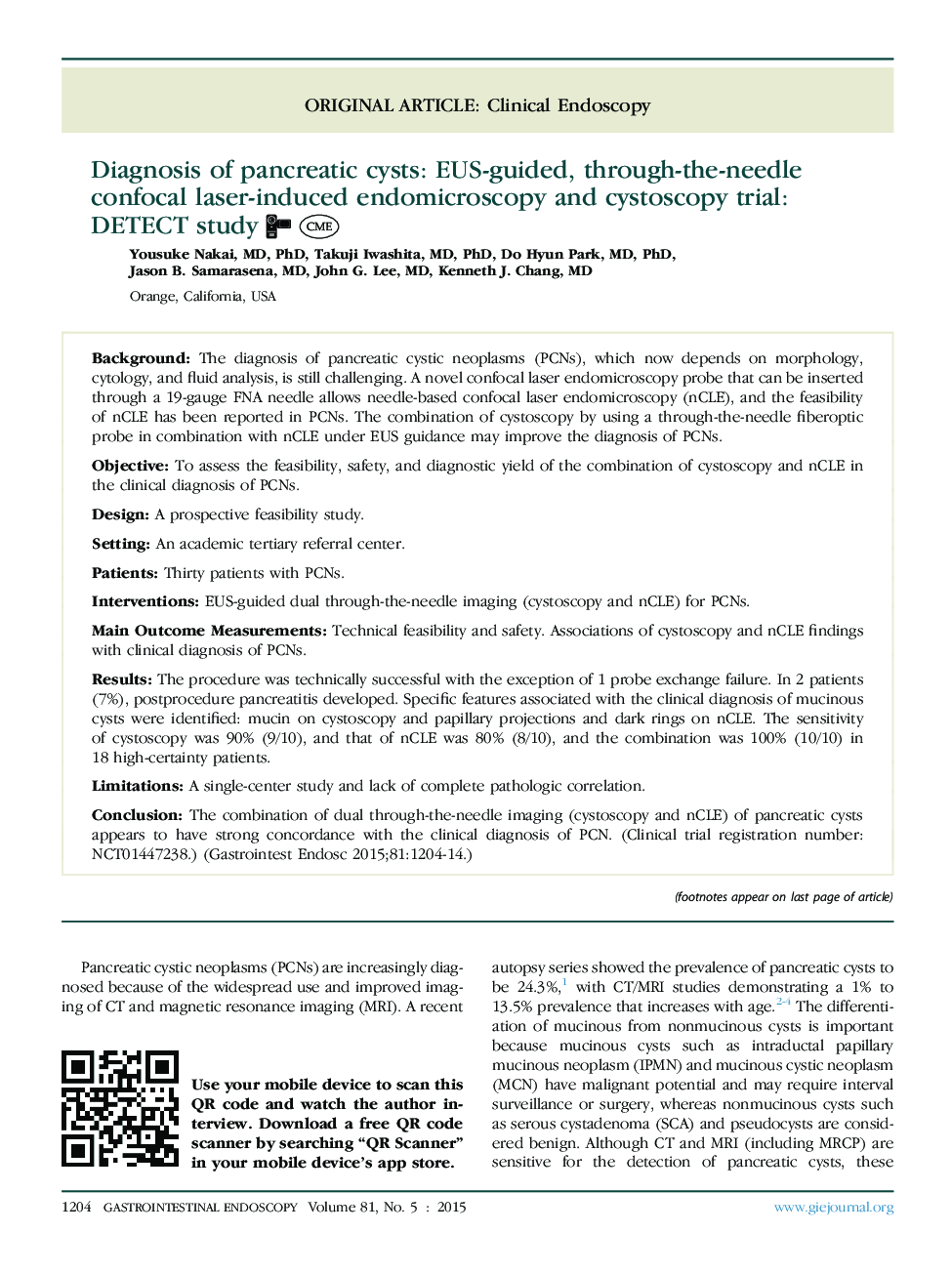| کد مقاله | کد نشریه | سال انتشار | مقاله انگلیسی | نسخه تمام متن |
|---|---|---|---|---|
| 3302338 | 1210295 | 2015 | 11 صفحه PDF | دانلود رایگان |

BackgroundThe diagnosis of pancreatic cystic neoplasms (PCNs), which now depends on morphology, cytology, and fluid analysis, is still challenging. A novel confocal laser endomicroscopy probe that can be inserted through a 19-gauge FNA needle allows needle-based confocal laser endomicroscopy (nCLE), and the feasibility of nCLE has been reported in PCNs. The combination of cystoscopy by using a through-the-needle fiberoptic probe in combination with nCLE under EUS guidance may improve the diagnosis of PCNs.ObjectiveTo assess the feasibility, safety, and diagnostic yield of the combination of cystoscopy and nCLE in the clinical diagnosis of PCNs.DesignA prospective feasibility study.SettingAn academic tertiary referral center.PatientsThirty patients with PCNs.InterventionsEUS-guided dual through-the-needle imaging (cystoscopy and nCLE) for PCNs.Main Outcome MeasurementsTechnical feasibility and safety. Associations of cystoscopy and nCLE findings with clinical diagnosis of PCNs.ResultsThe procedure was technically successful with the exception of 1 probe exchange failure. In 2 patients (7%), postprocedure pancreatitis developed. Specific features associated with the clinical diagnosis of mucinous cysts were identified: mucin on cystoscopy and papillary projections and dark rings on nCLE. The sensitivity of cystoscopy was 90% (9/10), and that of nCLE was 80% (8/10), and the combination was 100% (10/10) in 18 high-certainty patients.LimitationsA single-center study and lack of complete pathologic correlation.ConclusionThe combination of dual through-the-needle imaging (cystoscopy and nCLE) of pancreatic cysts appears to have strong concordance with the clinical diagnosis of PCN. (Clinical trial registration number: NCT01447238.)
Journal: Gastrointestinal Endoscopy - Volume 81, Issue 5, May 2015, Pages 1204–1214